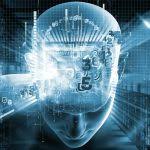Bias in Artificial Intelligence Doesn’t Erase Unintentional Bias.
The idea of artificial intelligence (AI) carries an almost mythical allure. Designs once exclusive to sci-fi novels are now embedded in our everyday lives from virtual assistants that guide us through mundane tasks to enigmatic algorithms that determine loan eligibility or criminal justice outcomes. Yet, as we become increasingly reliant on the intelligence of machines, there’s a growing recognition of a critical flaw in many AI systems that of bias.
For much of human history, intelligence has been viewed as an antidote to bias. The more rational or logical a system, the more impartial it is presumed to be. But in the realm of artificial intelligence, intelligence does not equate to objectivity, and it certainly does not mean there’s no room for unintentional bias. In fact, bias in AI often reflects and amplifies the prejudices rooted in the very human systems it was designed to emulate, highlighting both the inherent limitations of machine learning and the risks of uncritical adoption.
What Exactly Is Bias in AI?
Bias in AI occurs when a system makes skewed or unfair decisions as a result of the datasets it was trained on, the algorithms it employs, or how those algorithms interact with the world. AI, while immensely powerful, is not inherently neutral. It learns from data that is often a mirror of historical or societal inequities. In this way, bias is not some aberration inflicted upon AI systems but rather a natural outcome of how they are currently designed and deployed.
Consider this if an AI system is trained on historical hiring data, and the historical data reflects a preference for certain demographics (e.g., hiring more men in leadership positions), the system may learn to perpetuate that exact pattern. Similarly, if facial recognition software is trained on datasets that are predominantly composed of lighter-skinned faces, it may struggle to accurately identify or distinguish individuals with darker skin tones. These are not hypothetical concerns, but real-world examples of AI bias in action.
Why Does Unintentional Bias Arise in AI?
1. Data Is Not Neutral: The datasets used to train AI models reflect the imperfections of the world they come from. Whether it’s historical discrimination, underrepresentation of specific groups, or outright errors, the biases in training data inevitably shape the bias of the AI itself.
2. Design Decisions Matter: Even the most well-meaning developers make decisions about how an AI will be trained and used that can unintentionally introduce bias. Choices such as which features to prioritize, which metrics to optimize, and how data is preprocessed can have a profound impact on outcomes.
3. Lack of Diversity Among Developers: The AI field has historically been dominated by a narrow demographic, and this lack of diversity can result in blind spots. Certain perspectives, biases, or values might go unexamined, simply because the individuals designing the AI don’t experience or even perceive certain inequities.
4. Reinforcement of Feedback Loops: When biased algorithms are put into practice, their outputs can create a feedback loop. For instance, a policing algorithm that directs more patrols to specific neighborhoods may generate an overrepresentation of reported crimes in that area, further reinforcing its misplaced focus in subsequent iterations.
5. Ambiguities in Interpretability: Many AI systems, particularly deep learning models, operate as black boxes producing results without offering much transparency about how those results were achieved. This makes it challenging to identify and mitigate bias.
Why Unintentional Bias Is Dangerous
Bias in AI is not just a technical flaw. Its implications can be deeply harmful, reinforcing systemic inequalities and perpetuating injustices. Consider areas where AI is being applied today recruitment, criminal sentencing, healthcare, housing, education, and more. In each of these domains, biased AI systems can exacerbate existing disparities, further marginalizing already vulnerable communities.
For example:
– Healthcare: Studies have shown that AI systems used to determine patient care priorities often underestimate the needs of Black patients due to biased training data.
– Employment: Biased recruitment tools have been found to discriminate against women by favoring applicants whose resumes more closely resemble those of traditionally male dominated career paths.
– Law Enforcement: Predictive policing tools disproportionately target neighborhoods with large minority populations, often perpetuating the over-policing of these communities.
What makes these biases particularly insidious is that they are often invisible to the untrained eye. Because AI outputs can appear objective and mathematical, decision makers may rely on them unquestioningly, unaware that the systems they trust harbor the same prejudices they hoped to eliminate.
What Can Be Done to Address AI Bias?
While completely eradicating bias may be unrealistic, significant steps can and should be taken to mitigate its impact and to ensure AI is more fair, transparent, and accountable. Some strategies include:
1. Diverse and Representative Data: Expanding and diversifying the datasets used in AI training is essential. This means not just including different demographic groups, but actively addressing historical imbalances and ensuring data intentionally reflects a variety of lived experiences.
2. Interdisciplinary Collaboration: AI development must go beyond computer science. Ethicists, sociologists, and psychologists can provide valuable insights into how bias manifests and how it might be mitigated.
3. Algorithm Audits: Regular audits of AI systems can help identify where bias is occurring. These audits should assess not only the training data but also the design and implementation of algorithms to spot and address issues early.
4. Explainable AI: Building systems that clarify how decisions are reached can help users and auditors understand where biases might reside, making it easier to intervene.
5. Increased Accountability: Organizations that develop or deploy AI must take responsibility for its biases and the consequences of its decisions. Clear ethical guidelines, as well as regulatory frameworks, should hold companies accountable for AI systems that cause harm.
6. Workforce Diversity: A more diverse cohort of AI researchers and developers is vital to ensuring a broader range of perspectives are considered in system design.
Conclusion: Intelligence ≠ Impartiality
In striving to build intelligent machines, humanity has made astonishing progress. But intelligence itself human or artificial is not immune to bias. AI, being a reflection of the data, it is fed and the systems it is placed within, inherits the flaws of its creators and its context. The challenge, then, is not just to make AI smarter, but to make it fairer a task that requires deliberate effort, ongoing vigilance, and an acknowledgment of the societal structures that breed inequality in the first place.
Bias in AI is not an unsolvable problem, but it demands humility and responsibility from those who design, deploy, and oversee these systems. At its best, AI has the potential to elevate fairness and objectivity to unprecedented levels. But realizing this potential starts with recognizing that intelligence alone is no guarantee of equity and that even the most advanced systems still have room for unintentional bias.





